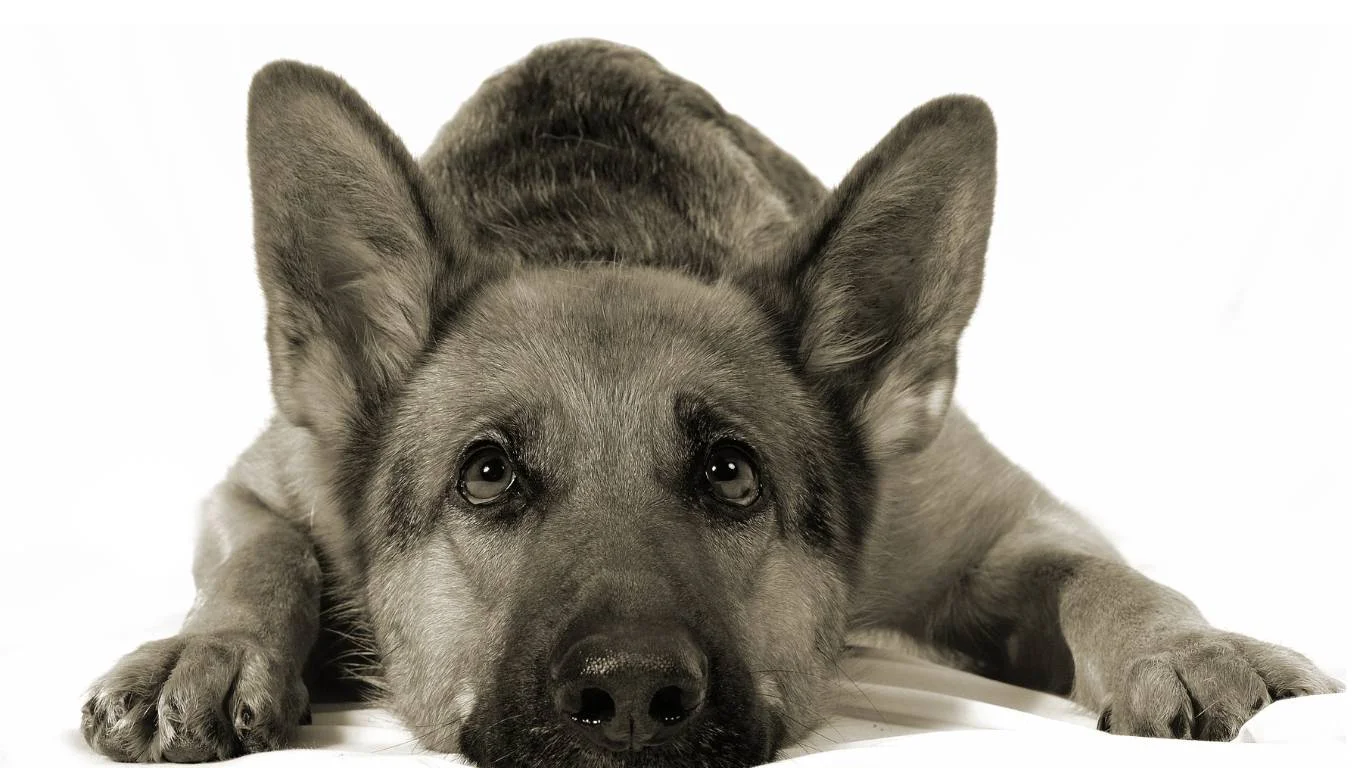What to Do if Your Dog’s Leg is Swollen and Painful – Urgent Tips That Help Fast
If you’re here because you’re panicking and frantically Googling what to do if your dog’s leg is swollen and painful, you’re definitely not alone. I’ve been in the vet field for a good while now, and I can tell you—this is a super common concern among pet parents. Whether it’s a sudden limp after a rough play session or your pup just woke up not putting weight on one leg, it’s always alarming. I’ve seen everything from tiny splinters causing big reactions to serious conditions that needed immediate care. The important thing is: you’re here, and you’re ready to help your pup. Let’s walk through this together so you can get some peace of mind—and more importantly, your dog can get some relief.
First Things First: Don’t Panic (Easier Said Than Done, I Know)

When your dog is limping or visibly uncomfortable, the first instinct is often to panic—and trust me, I’ve seen owners rush in with wide eyes and trembling hands. It’s normal! But take a breath. Swelling and pain in a dog’s leg can stem from a whole range of issues, and not all of them are serious. From something as minor as a bug bite or sprain to something more concerning like an infection or even a fracture, there’s a wide range of possibilities. Let’s break it down calmly and clearly.
Common Causes of a Swollen and Painful Dog Leg

Sprains, Strains, and Soft Tissue Injuries
This is probably one of the most frequent reasons I’ve seen dogs come in limping. Maybe your pup chased a squirrel too hard, jumped awkwardly off the couch, or had a little too much fun zooming around the backyard. Soft tissue injuries like sprains can cause swelling, tenderness, and limping. In most cases, with rest and a little TLC, they bounce back pretty quickly.
Bites or Stings
Especially in the warmer months, I’ve had clients bring in dogs whose legs swelled up like balloons after a bee sting or spider bite. The leg will often look inflamed and feel warm to the touch. Some dogs even try to lick or chew at the area. If your dog’s leg suddenly swells and they were outside recently, this could be the culprit.
Fractures or Dislocations
This one’s more serious. If the leg is extremely painful to the touch, your dog refuses to put any weight on it, or the limb looks… off (think weird angle), it could be a fracture or dislocation. These need veterinary attention ASAP. Don’t try to move or manipulate the leg—just keep your dog calm and get to a vet.
Infections or Abscesses
Sometimes an injury (even a minor one) can get infected, especially if there’s a cut or puncture wound involved. You might notice swelling, heat, redness, or even a weird smell. Infections under the skin can turn into abscesses—little pockets of pus—that are super painful for dogs. These usually need antibiotics and sometimes drainage.
Arthritis or Joint Inflammation
If your pup is older or has a history of joint issues, arthritis could be flaring up. I’ve worked with a lot of senior dogs who occasionally show signs of swelling and pain in their legs, especially after long walks or cold, damp weather. It’s not an emergency, but definitely something to manage long-term with the help of your vet.
What to Do If Your Dog’s Leg Is Swollen and Painful (Step-by-Step)

Step 1: Check the Leg Gently
Use light pressure and calm hands. Start at the paw and move upward. Look for any signs of cuts, swelling, heat, or unusual lumps. If your dog growls, whines, or tries to move away, stop—don’t force it. Pain is a message. If you see anything that seems off, make a note (or snap a quick photo for your vet).
Step 2: Restrict Movement
Even if it’s “just a sprain,” more movement can make things worse. Try to keep your dog in a confined, calm area. No stairs, no jumping on couches, no rough play. Short leash walks only for potty breaks if needed.
Step 3: Apply a Cold Compress
Wrap a clean towel around an ice pack or a bag of frozen peas and apply it to the swollen area for 10–15 minutes. Just like with people, cold helps reduce inflammation and can provide some relief. But don’t leave it on too long, and never apply ice directly to the skin.
Step 4: Monitor Closely
- Is the swelling going down?
- Is your dog eating and drinking normally?
- Is the pain getting better or worse?
If things improve within 24 hours, great! But if it gets worse or your dog won’t bear weight on the leg, it’s time for the vet.
Step 5: Call Your Vet If…
- The leg looks broken or twisted
- Your dog is whining or yelping when touched
- There’s a visible wound or bleeding
- Swelling increases or spreads
- Your dog refuses to eat, walk, or acts lethargic
As someone who has helped hundreds of pet parents through moments like this, my best advice is: trust your gut. If something feels wrong, it probably is. It’s always better to get checked out and be told it’s “nothing” than to wait and risk it being something serious.
Understanding Your Dog’s Pain: What the Signs Really Mean
Dogs are pros at hiding pain—seriously, they’re way tougher than we are. So when they *do* show signs of discomfort, it’s not to be brushed off. Here’s what to keep an eye on:
- Limping or favoring one leg
- Whining, yelping, or growling when touched
- Excessive licking or chewing at a leg or paw
- Reluctance to walk, jump, or climb stairs
- Swelling, redness, or warmth to the touch
Sometimes it’s obvious, like when a dog is holding a leg up and refusing to walk. Other times it’s more subtle—they might just be a little slower than usual, or they flinch when you pet them. Always better to err on the side of caution.
When Rest Isn’t Enough: Knowing When to Escalate

Okay, so let’s say you’ve done the home care basics—iced the area, kept your dog calm, limited activity—and things just aren’t getting better. Or maybe your gut is screaming that something’s just off. In the clinic, I always tell pet parents that if your dog’s leg is still swollen and painful after a day or two of rest, or if things are getting worse, it’s time to escalate. You’re not being paranoid—you’re being smart. And hey, even if it turns out to be a minor thing, you’ll be glad you didn’t wait too long.
Sometimes, we see situations where the leg pain is just the tip of the iceberg. Swelling can be a sign of internal damage, joint issues, or even early infection that hasn’t become obvious yet. The tricky part? Dogs are tough cookies. They won’t always cry out or show obvious pain. I’ve had dogs come in wagging their tails with fractures. I kid you not.
How a Vet Will Evaluate a Swollen, Painful Dog Leg
When you bring your dog in, we’ll usually start with a hands-on physical exam. I’ve been right there holding pets still while our vet checks for instability in joints, heat or temperature differences between limbs, or any unusual fluid buildup. From there, we may move to:
- X-rays: To rule out breaks or dislocations.
- Ultrasound: Sometimes used if we suspect soft tissue or ligament damage.
- Joint tap: If we think it’s arthritis, infection, or immune-related.
- Blood work: Especially if swelling is accompanied by fever or general unwellness.
Every case is different, but I always recommend bringing a list of observations with you—when the swelling started, what activities your pup did that day, any medications or supplements they’re on. That info helps us a ton when piecing together what’s going on.
Can Nutrition Help with Swollen, Painful Dog Legs?

You bet it can. This is the part where I get especially nerdy because canine nutrition is where I really shine. When dogs have recurring leg issues—especially swelling due to inflammation, arthritis, or soft tissue injuries—I always like to look at what they’re eating. Nutrition is a massive part of healing and long-term joint support. Inflammation doesn’t just come from injuries; it can come from what’s inside the bowl too.
Anti-Inflammatory Nutrients to Support Joint Health
- Omega-3 Fatty Acids: Found in fish oil and flaxseed, these are gold when it comes to reducing joint inflammation.
- Glucosamine and Chondroitin: These natural compounds help repair cartilage and improve joint function. They’re in a lot of vet-recommended supplements.
- Turmeric (Curcumin): Known for its anti-inflammatory effects. But it needs to be in a form dogs can absorb—look for vet-approved blends.
- Bone Broth: Gentle, nourishing, and full of collagen. Great for recovery and gut support, too.
I had one older golden retriever patient with recurring leg swelling due to arthritis. After a couple of months on a high-quality joint diet with added Omega-3s and mobility support, his owner swore he was moving better than he had in years. Not a miracle cure, but diet makes a huge difference when done right.
What to Avoid in Their Diet
Just like there are healing foods, there are also ones that can contribute to inflammation:
- Low-quality kibble filled with fillers and artificial preservatives
- Excess sugars or high-carb treats
- Too much red meat or poorly sourced protein (can spike inflammation in sensitive dogs)
Always read those ingredient labels! If you’re not sure where to start, ask your vet—or feel free to bring it up at your next visit. I’ve reviewed hundreds of dog food formulas and always love helping pet parents choose better options.
Why Your Dog’s Breed (and Body Type) Matters

Something I always remind clients: not all dogs are built the same, and some breeds are just more prone to leg issues. For example:
- Labradors and Golden Retrievers: Super active, but prone to joint and ligament injuries (especially ACL tears).
- Bulldogs and Basset Hounds: Their stocky bodies and short legs can put stress on joints.
- Greyhounds and Whippets: Thin, athletic builds can mean more risk during high-speed play or accidents.
- Small breeds like Yorkies or Chihuahuas: Prone to luxating patellas, where the kneecap slips out of place.
If you’ve got a breed with known joint or leg sensitivities, it’s worth getting ahead of it—supportive supplements, healthy weight maintenance, and exercise moderation can go a long way. And don’t underestimate how much carrying extra weight can strain a dog’s legs. I’ve seen overweight dogs lose just five pounds and suddenly move like they’re five years younger.
How to Support Your Dog’s Recovery at Home (Without Making It Worse)
Let’s say your vet has ruled out anything major, or maybe your pup had a minor injury and is on the mend. What next? How do you help without overdoing it?
- Limit activity for real. I know it’s hard to keep a dog calm—especially young, energetic ones—but it’s necessary. No zoomies, no off-leash time, no roughhousing.
- Use ramps or steps. If your dog normally jumps onto the bed or couch, give them a safer way up and down to prevent reinjury.
- Supportive bedding. Orthopedic beds can help reduce pressure on sore joints and give your dog a cozy place to rest.
- Massage and warm compresses. Once the swelling has gone down, gentle massage and heat can encourage healing and circulation (only if approved by your vet).
I’ve had clients tell me, “He seems fine now—can I let him play again?” And I always say: even if they’re not limping, healing is still happening under the surface. Give them a few more quiet days than you think they need. Their future self will thank you.
Preventing Future Leg Swelling and Pain in Dogs

If your dog’s leg has ever been swollen and painful, you already know it’s no walk in the park—for you or your pup. After supporting hundreds of dogs through recovery in my time as a veterinary assistant, I can say without hesitation: prevention is your best friend.
Whether your dog’s injury was caused by a clumsy tumble, an overzealous game of fetch, or an underlying health issue, there’s a lot you can do to help reduce the chances of it happening again. Dogs can be tough, but they also rely on us to help them make smart choices—especially when they don’t know when to hit the brakes.
Exercise, But With Strategy
I love seeing dogs live active, full lives. But not all exercise is created equal. One of the most common things I saw in the clinic? Dogs that got hurt because they went from couch potato to weekend warrior in five seconds flat. Their bodies just weren’t ready.
- Stick to consistent, moderate activity rather than sudden, intense play.
- Warm up with a short walk before heading into rough play or runs.
- Keep high-impact activities like jumping off furniture or stairs to a minimum, especially for small or aging breeds.
I had one boxer patient, Lucy, who would fly off the deck every time she got the zoomies. Sure enough, she ended up with a sprained leg. Her humans built a small ramp instead, and she was back to her goofy self in no time—without the vet bills.
Weight Management Is a Game-Changer
This is one I can’t stress enough. Extra pounds = extra pressure on joints, muscles, and bones. Even just 5–10% over your dog’s ideal weight can make them more prone to leg swelling, pain, and joint degeneration.
If you’re not sure what a healthy weight looks like for your dog, ask your vet at their next checkup or consult a canine nutrition expert. You should be able to feel their ribs but not see them, and they should have a nice waist when viewed from above.
Regular Check-Ins & Early Intervention
Swelling and pain don’t always happen overnight. Sometimes, it creeps in slowly. That’s why I always suggest giving your dog a quick body check weekly—just like you’d do for lumps or fleas. Feel around their legs for any new swelling, heat, tenderness, or asymmetry.
And don’t brush off subtle signs like:
- Limping after a long nap
- Reluctance to jump into the car
- Favoring one leg during walks
Those little things often hint that something’s brewing under the surface. Catch it early, and you’ll save your dog a lot of discomfort and yourself a lot of stress.
Long-Term Joint Support: What I Recommend Often

If your dog has a history of joint pain, injuries, or leg swelling, you don’t have to wait until symptoms flare up again to take action. There are fantastic ways to support their joint health daily.
Supplements I Often Suggest:
- Fish oil: Look for high-quality sources of EPA and DHA (not all are created equal).
- Glucosamine/Chondroitin: These are classics for a reason—great for long-term cartilage protection.
- Green-lipped mussel: A natural anti-inflammatory that’s been studied for joint benefits.
- Probiotics: Believe it or not, gut health can impact inflammation in the body. A happy gut = better recovery.
Of course, always check with your vet before adding anything new to your dog’s routine. Every pup is different, and it’s important to find what works for them, not just what’s trending on the internet.
Joint-Friendly Add-Ons
- Elevated food bowls to reduce awkward bending for large breeds
- Traction mats or booties for dogs with slippery floors
- Soft surfaces for resting—orthopedic beds are worth the investment
I’ve seen even small tweaks like these make a big difference. One senior German shepherd we worked with stopped slipping and falling inside once his owner put runners down the hallway. Less strain = less swelling = happier doggo.
Final Thoughts: Be Your Dog’s Advocate
If there’s one thing I hope you take away from all of this, it’s that you know your dog better than anyone else. If your dog’s leg is swollen and painful, don’t second-guess that little voice in your head. Trust it.
Sometimes, it’s nothing. Other times, it’s the start of something that needs medical attention. Either way, you’re doing the right thing by asking questions, getting informed, and showing up for your pup when they need you most.
From one dog lover to another—your care, patience, and instincts make all the difference.
Trusted Sources for More Info
Disclaimer
This article is for informational purposes only and is not a substitute for professional veterinary advice, diagnosis, or treatment. Always seek the advice of your veterinarian or qualified animal healthcare provider with any questions you may have regarding your pet’s health condition.






